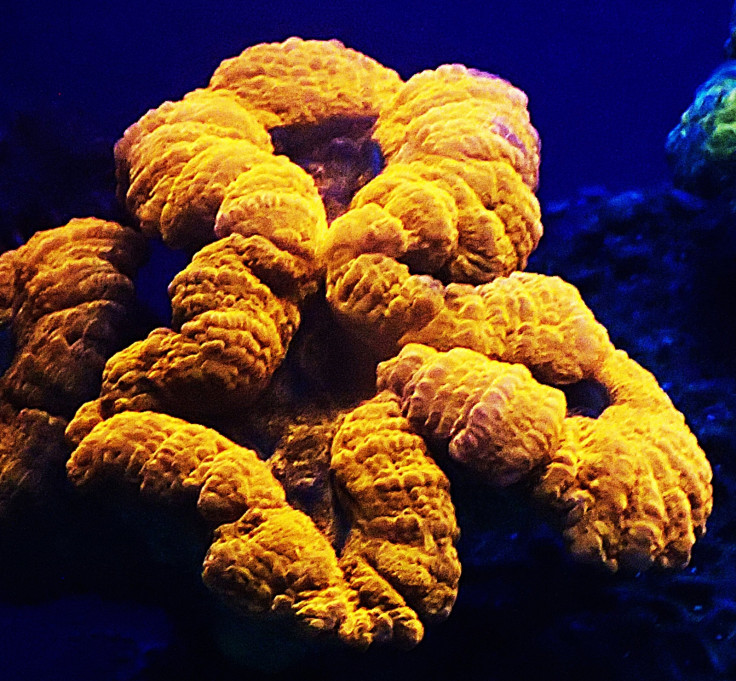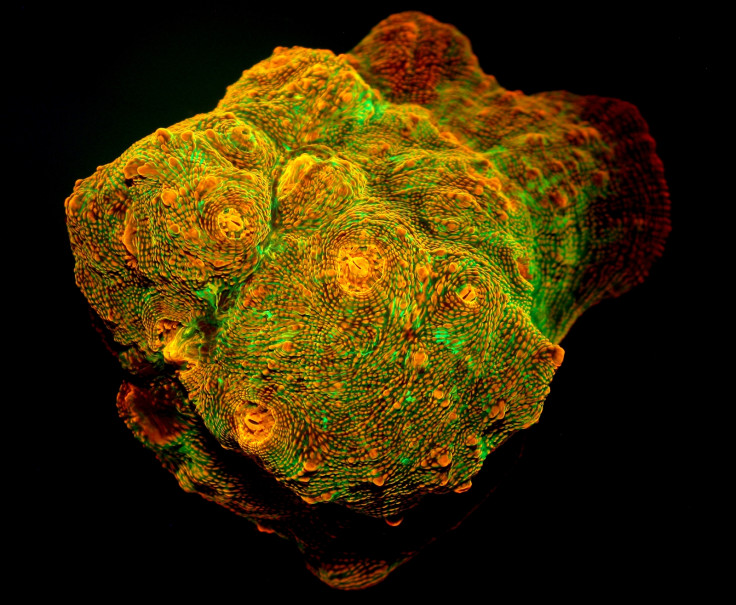How 'glow in the dark' corals survive in the cold dark depths of the sea
Deep water corals become fluorescent to promote photosynthesis.
In the cold dark depths of the ocean, corals can become brightly fluorescent, as they absorb the little light there is for the benefit of the microorganisms that provide them with most of their energy needs.
In shallow waters, some corals have been shown to glow because they produce fluorescent proteins that protect them from the sun. However, scientists had been puzzled by the fact that coral in deep water could also glow, despite a very limited exposure to the rays of the sun.
In a study now published in the Proceedings of the Royal Society B, researchers have now solved this mystery, explaining that the fluorescent proteins they produce are crucial to their survival.
Tropical corals have microscopic algae known as zooxanthellae living in their tissues. The two organisms live in symbiosis - the corals provide a shelter for the tiny algae and in return get photosynthetic products that provide them with most of their energy needs.
"In shallow waters, we have good evidence that the fluorescent pigments produced by the corals act as sun screen for the algae but we were less sure of what was going on in deeper water. We though that the pigments could enhance photosynthesis but here we were able to reveal surprising mechanisms for how this happens," study author Jörg Wiedenmann, head of the Coral Reef Laboratory at the University of Southampton told IBTimes UK.

Re-emiting blue light
With his team, Wiedenmann examined Red Sea corals to see how well different light colours spread through dense layers of zooxanthellae. They found that these deep water corals - which are found in depths down to 165 metres - survive by making a specific type of fluorescent protein that captures the blue light from the sun that reaches them.

These proteins then reemit the light as orange-red light, allowing it to penetrate deeper into the coral's tissue, and to promote photosynthesis by the algae.
Next, the scientists worked in an aquarium where they simulated deep water light environments. They found that brightly red fluorescent corals had a better chance of survival in deep water in the long run compared to other corals - which may explain why in the Red Sea, corals with red fluorescent pigments become more abundant as you reach greater depths.
"Our work shows how sophisticated the relationship between corals and zooxanthellae is. It shows that they developed sophisticated adaptation mechanisms to survive at such dark cold depths," Wiedenmann pointed out.
These findings could challenge current thinking in the field of conservation. To protect tropical corals in shallow reefs, which are most affected by bleaching, some people had suggested using deep water habitats as potential refuges, moving the corals from increasingly degraded shallow water reefs to greater depths.
However, the study suggests that this could be problematic for the shallow water corals' survival as they have not developed a sophisticated adaptation mechanism to the ocean's deep habitats, unlike deep water corals.
Protecting corals is a priority as coral reefs provide coastal protection and income to millions of people worldwide. Additionally, the fluorescent proteins identified in the research have immense potential for medical research. They could be used by scientists to screen novel drugs and to study their action in the body of living organisms by lighting up their cells.
© Copyright IBTimes 2025. All rights reserved.






















